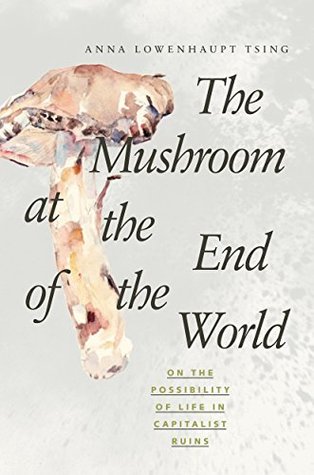More on this book
Community
Kindle Notes & Highlights
Read between
May 18 - May 28, 2020
the history of the human concentration of wealth through making both humans and nonhumans into resources for investment. This history has inspired investors to imbue both people and things with alienation, that is, the ability to stand alone, as if the entanglements of living did not matter.5 Through alienation, people and things become mobile assets; they can be removed from their life worlds in distance-defying transport to be exchanged with other assets from other life worlds, elsewhere.
Imagining the human since the rise of capitalism entangles us with ideas of progress and with the spread of techniques of alienation that turn both humans and other beings into resources. Such techniques have segregated humans and policed identities, obscuring collaborative survival.
To learn anything we must revitalize arts of noticing and include ethnography and natural history. But we have a problem with scale. A rush of stories cannot be neatly summed up.
Yet it is just these interruptions that step out of the bounds of most modern science, which demands the possibility for infinite expansion without changing the research framework. Arts of noticing are considered archaic because they are unable to “scale up” in this way.
Wal-Mart pioneered the required use of universal product codes (UPCs), the black-and-white bars that allow computers to know these products as inventory.7 The legibility of inventory, in turn, means that Wal-Mart is able to ignore the labor and environmental conditions through which its products are made:
One side of the tag, the side with the black-and-white bars, allows the product to be minutely tracked and assessed. The other side of the tag is blank, indexing Wal-Mart’s total lack of concern with how the product is made, since value can be translated through accounting.
Global supply chains ended expectations of progress because they allowed lead corporations to let go of their commitment to controlling labor. Standardizing labor required education and regularized jobs, thus connecting profits and progress. In supply chains, in contrast, goods gathered from many arrangements can lead to profits for the lead firm; commitments to jobs, education, and well-being are no longer even rhetorically necessary.
One Japanese scientist explained matsutake as the result of “unintentional cultivation,” because human disturbance makes the presence of matsutake more likely—
Dr. Suzuki was treating species in the way cultural anthropologists treat their units: as frames that must be continually questioned to retain their use. The kinds we know, he implied, develop at that fragile junction between knowledge-making and the world. Kinds are always in process because we study them in new ways. This makes them no less real, even as they seem more fluid and beckoning of questions.


